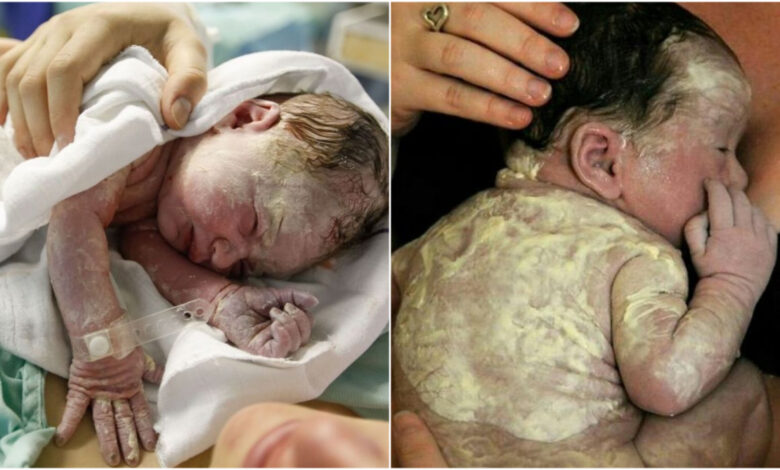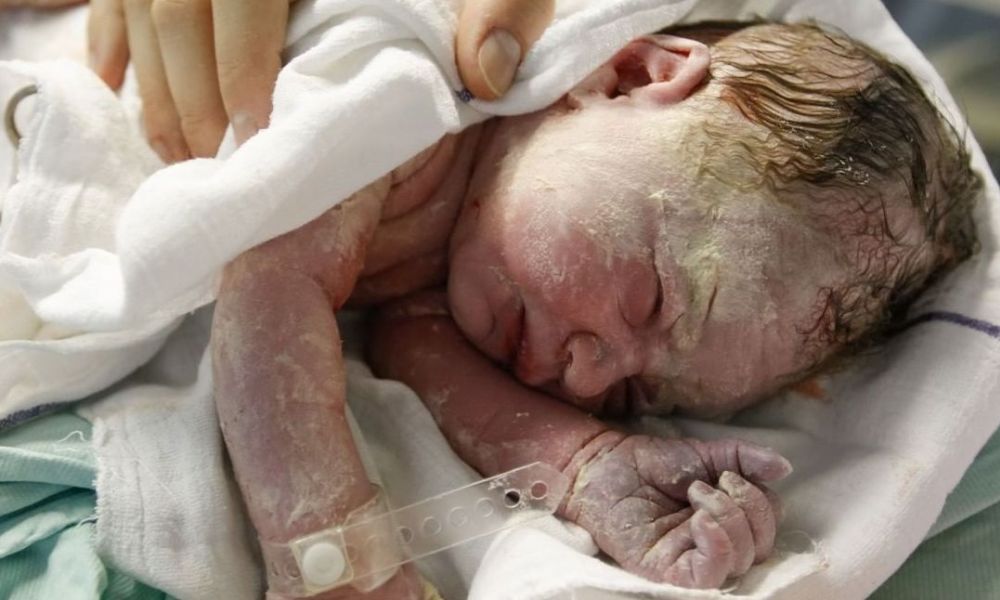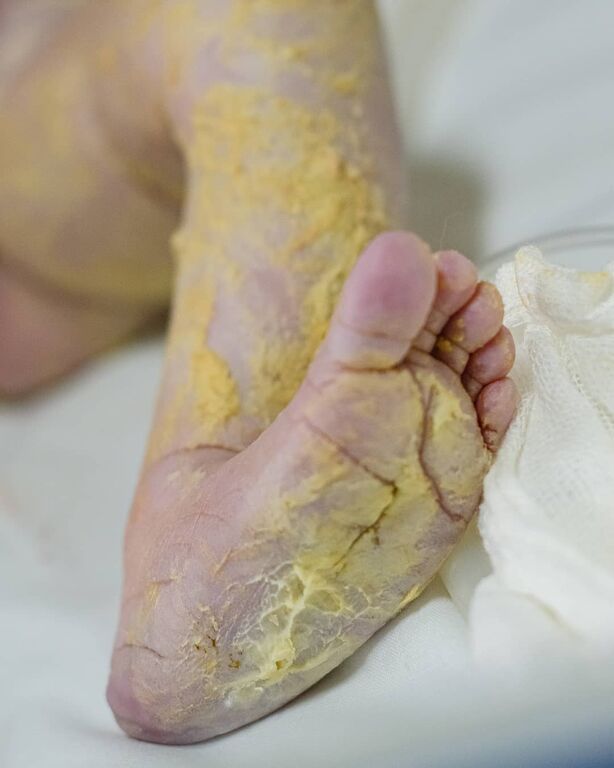
What is vernix caseosa?
Vernix caseosa is a natural protective layer that covers a newborn baby’s skin. It appears as a creamy, white substance with a texture reminiscent of soft cheese. This substance develops on the baby’s skin while they are in the womb, and traces of it can still be present after birth.
But what exactly is the purpose of vernix caseosa, and why is it present? To understand its role, it’s important to consider the environment inside the mother’s womb, where the baby is developing. Over the course of 40 weeks, the fetus is immersed in amniotic fluid. Vernix caseosa serves as a protective barrier, shielding the baby’s delicate skin from the surrounding amniotic fluid. Additionally, it contributes to the baby’s skin remaining smooth and soft after birth and acts as a defense against potential infections during fetal development.

As the delivery date approaches, the amount of vernix caseosa on the baby’s skin naturally diminishes. It’s common to find some remnants of it on the baby even after birth. Prematurely born babies may have more of it, while babies born later may have less or none at all.
The Benefits of vernix caseosa during and after pregnancy
Vernix caseosa offers a range of benefits to the baby, both during pregnancy and after birth. Regardless of the quantity present on the baby’s skin at birth, it is advisable to keep it in place as much as possible.

1. Antibacterial Properties: Newborns possess sensitive immune systems, making them susceptible to infections. While breastfeeding is one method to boost a baby’s immunity, vernix caseosa also plays a role in protecting the baby from infections after birth. This protective layer contains antioxidants and exhibits anti-inflammatory and antimicrobial properties.
2. Facilitating Birth: The presence of vernix caseosa covering the baby’s skin, especially on the body and head, eases the process of passage through the birth canal during childbirth.
3. Regulating Body Temperature: After birth, it takes time for the baby to effectively regulate its body temperature. Fetal sebum contributes to this by helping maintain a stable body temperature for the newborn.
4. Skin Moisturization: Fetal sebum also acts as a natural moisturizer for the baby’s skin, leaving it soft and hydrated while preventing dryness.

Photos of Babies with vernix caseosa
The practice of capturing birth moments through photography has become increasingly popular in recent years. Many couples now hire professional photographers to document the precious moments of childbirth. Among the cherished photographs are those taken just seconds after birth, featuring babies with traces of vernix caseosa still on their skin.







